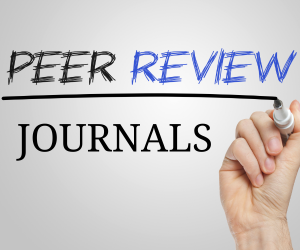STUNTING PREVENTION PROGRAM IN INDONESIA: A SYSTEMATIC REVIEW
DOI:
https://doi.org/10.53555/bzbj1680Keywords:
Stunting, prevention program of stunting, IndonesiaAbstract
Background: Stunting is the result of inadequate birth and parenting, this is related to learning and barriers to community involvement. Therefore, the incidence and severity of stunting are indicators used for population assessment and can be useful for tracking the development of children in a population over time.
The aim: This study aims to show the program of stunting prenetion in Indonesia.
Methods: By comparing itself to the standards set by the Preferred Reporting Items for Systematic Review and MetaAnalysis (PRISMA) 2020, this study was able to show that it met all of the requirements. So, the experts were able to make sure that the study was as up-to-date as it was possible to be. For this search approach, publications that came out between 2013 and 2023 were taken into account. Several different online reference sources, like Pubmed and SagePub, were used to do this. It was decided not to take into account review pieces, works that had already been published, or works that were only half done.
Result: In the PubMed database, the results of our search brought up 810 articles, whereas the results of our search on Sage Pub brought up 186 articles. The results of the search conducted for the last year of 2013 yielded a total 274 articles for PubMed and 73 articles for Sage Pub. In the end, we compiled a total of 20 papers, 3 of which came from PubMed and 17 of which came from Sage Pub. We included five research that met the criteria.
Conclusion: Stunting is a state of nutritional disorder that is influenced by various factors, both regarding the condition of nutritional intake, knowledge of parents or the surrounding environment, as well as the role of government. So that in implementing the stunting prevention program, all concerned parties must be involved, starting from parents, community leaders, to government and non-government circles.
References
Maulidiana AR, Sutjiati E. Low intake of essential amino acids and other risk factors of stunting among under-five children in Malang City, East Java, Indonesia. J Public health Res. 2021;10(2):220–6.
Sufri S, Nurhasanah, Jannah M, Dewi TP, Sirasa F, Bakri S. Child Stunting Reduction in Aceh Province: Challenges and a Way Ahead. Matern Child Health J [Internet] 2023;27(5):888–901. Available from: https://doi.org/10.1007/s10995-023-03601-y
Syafrawati S, Lipoeto NI, Masrul M, Novianti N, Gusnedi G, Susilowati A, et al. Factors driving and inhibiting stunting reduction acceleration programs at district level: A qualitative study in West Sumatra. PLoS One [Internet] 2023;18(3 MARCH):1–21. Available from: http://dx.doi.org/10.1371/journal.pone.0283739
Siswati T, Iskandar S, Pramestuti N, Raharjo J, Rubaya AK, Wiratama BS. Drivers of Stunting Reduction in Yogyakarta, Indonesia: A Case Study. Int J Environ Res Public Health. 2022;19(24).
Wulandari RD, Laksono AD, Kusrini I, Tahangnacca M. The Targets for Stunting Prevention Policies in Papua, Indonesia: What Mothers’ Characteristics Matter? Nutrients. 2022;14(3):1–10.
Oktaviana W, Keliat BA, Wardani IY, Pratiwi A. Effectiveness of health education and infant therapeutic group therapy on baby aged 0-6 months to prevent stunting risk factors: Maternal depression. J Public health Res. 2022;11(2):87–92.
Arini D, Nursalam N, Mahmudah M, Faradilah I. The incidence of stunting, the frequency/duration of diarrhea and Acute Respiratory Infection in toddlers. J Public health Res. 2020;9(2):117–20.
Laksono AD, Wulandari RD, Amaliah N, Wisnuwardani RW. Stunting among children under two years in Indonesia: Does maternal education matter? PLoS One [Internet] 2022;17(7 July):1–11. Available from:
http://dx.doi.org/10.1371/journal.pone.0271509
Mediani HS, Hendrawati S, Pahria T, Mediawati AS, Suryani M. Factors Affecting the Knowledge and Motivation of Health Cadres in Stunting Prevention Among Children in Indonesia. J Multidiscip Healthc. 2022;15(May):1069– 82.
Wiliyanarti PF, Wulandari Y, Nasrullah D. Behavior in fulfilling nutritional needs for Indonesian children with stunting: Related culture, family support, and mother’s knowledge. J Public health Res. 2022;11(4).
Mayfitriana Z, Suwargiani AA, Setiawan AS. Growth Stunting Prevention in Indonesia: Dentist Knowledge and Perception. Eur J Dent. 2022;
Basri H, Hadju V, Zulkifli A, Syam A, Indriasari R. Effect of moringa oleifera supplementation during pregnancy on the prevention of stunted growth in children between the ages of 36 to 42 months. J Public health Res. 2021;10(2):290–5.
Setyawan FEB, Lestari R. Holistic-comprehensive approaches to improve nutritional status of children under five years. J Public health Res. 2021;10(2):257–62.
Nadirawati N, Suryaningsih C, Virgona Bangun A, D. Dela Rosa R. Prevention and Intervention of Stunting in Indonesia: a Scoping Review. J Sci Heal. 2023;2(1):14–28.
Gani AA, Hadju V, Syahruddin AN, Otuluwa AS, Palutturi S, Thaha AR. The effect of convergent action on reducing stunting prevalence in under-five children in Banggai District, Central Sulawesi, Indonesia. Gac Sanit. 2021;35:S421–4.
Herawati DMD, Sunjaya DK. Implementation Outcomes of National Convergence Action Policy to Accelerate Stunting Prevention and Reduction at the Local Level in Indonesia: A Qualitative Study. Int J Environ Res Public Health. 2022;19(20).
Atamou L, Rahmadiyah DC, Hassan H, Setiawan A. Analysis of the Determinants of Stunting among Children Aged below Five Years in Stunting Locus Villages in Indonesia. Healthc. 2023;11(6):1–12.
Downloads
Published
Issue
Section
License

This work is licensed under a Creative Commons Attribution 4.0 International License.
Licensing
Ninety Nine Publication publishes articles under the Creative Commons Attribution 4.0 International License (CC BY 4.0). This licensing allows for any use of the work, provided the original author(s) and source are credited, thereby facilitating the free exchange and use of research for the advancement of knowledge.
Detailed Licensing Terms
Attribution (BY): Users must give appropriate credit, provide a link to the license, and indicate if changes were made. Users may do so in any reasonable manner, but not in any way that suggests the licensor endorses them or their use.
No Additional Restrictions: Users may not apply legal terms or technological measures that legally restrict others from doing anything the license permits.





